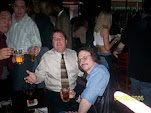From the November 2020 Issue of 'Sword and Pen', The monthly Newsletter of Brad Steiner's American Combato System (aka: Jen Do Tao).© COPYRIGHT 2008 BY BRADLEY J. STEINER - ALL RIGHTS RESERVED.
A Practical Tip For Stick Fighting
by Bradley J. Steiner
THIS is not for stick “artists” who train intensely and for many months on end to become jo-jitsu or bo or nun-chuck experts. We are addressing the following to those solely concerned with practical self-defense and hand-to-hand combat. For the person who will be focusing solely on the basic, most practical skills, and who will be consuming perhaps ten hours on technical practice, and integrating his stick-work with unarmed combatives, knifework, use of firearms, etc. The type of stick we are referencing is either the walking stick or a hardwood stick roughly approximating the length of a 26-28” baton. Improvisation with an umbrella may be practical in many instances.
Almost anyone who has neither experience nor training in using a stick in combat will, upon being handed a stick and asked to demonstrate how he’d hit someone with it, hold the stick at one end and swing it in a smashing, clubbing blow so that his target will be struck by the end and upper-quarter or so of the weapon. No doubt, in its place a very destructive and potent strike. However, nearly all club or stick-swing defenses have been developed and taught against this more-or-less conventional club swing. There are a few exceptions here, but they are unusual, far between, and by no means universally taught. In fact the action of merely swinging one’s arm up to shield one’s head is natural and reflexive, and often may be speedy enough (even without training) to protect the from being struck.
One of the best ways to attack someone with a stick is to hold it in two hands (something like one might hold a bayonetted rifle for the thrust) and thrust the end powerfully into the groin, solar plexus, sternum, or throat/facial/mouth area. The thrust must be delivered very rapidly, by surprise, with a powerful double grip, and accompanied by a sharp yell and one’s bodyweight behind the blow. Followup after that blow will be easy, since anyone solidly struck in that manner will be totally disoriented for a second or two, at least.
Sometimes in a self-defense situation, that thrusting action alone may be more than enough to deter one’s attacker and provide one the opportunity to escape the scene. But if it doesn’t . . . Followup after the thrust lands may now be a swinging smash with the end of the stick . . . executed either with a one-hand or a two-hand grip . . . this time two hands will hold the stick like a baseball bat, at one end. The followup smash may be across the neck or head. Or it may be across the back (kidney area). Or perhaps across the knees or shins. Alternatively, bringing the center of the stick (while still gripping it in two hands after the thrust) snap the center of the stick upward and catch the attacker’s throat, mouth or facial area with a strong blow. Following the above, take the stick and jam the end (still holding it n the two-hand thrusting grip) into the attacker’s face, throat, sternum, etc.
The main point we wish to make here is that the simplest and most foolproof way for the average individual to land a solid, reliable first strike with a stick is by jabbing and ramming the end viciously into an exposed vulnerable area of the assailant. One of the great advantages of a walking stick is that it is always right there in your hand. This is not true of a handgun or a knife, and so speed into action with minimal delay is a great advantage of the stick as a weapon (or a stick substitute, like an umbrella).
Many years ago we pointed this out in a column we had in a popular gun magazine. It drew a sarcastic comment by a well-publicized handgun “instructor”. Apparently this individual made the same mistake that most unschooled novices make: He believed that with a gun on his hip and the ability to employ it he needed nothing else for self-defense. A commentary on the person’s very limited perspective on self-defense. Aside from being a very formidable weapon by itself in trained hands we strongly recommend a walking stick if you have a license to carry a concealed weapon, and routinely go armed with a pistol.
First, because skilled employment of your walking stick may make accessing your firearm unnecessary (as a stout hardwood baton often made police patrol officers of past decades not need to draw their sidearms). Second, because possession of a stick and the skill with which to use it may enable you to get to you holstered handgun, by enabling you to clear the distance, time, and space enabling you to effectively do so. Only a poorly informed defender would, for example, attempt to quickly draw his concealed handgun when confronted by two or three punks within a couple of feet of himself. The chances of them jumping him and getting his weapon would be too great. But, that situation would be ideal for a trained person to employ a stout walking stick which he was holding in his hand! After some deft employment of his stick, access to his handgun would be easy. And, since he would be able to cover his attacker(s), it might not be necessary to fire; and that would be a blessing. If you haven’t already done so, make simple, basic stick work a part of your training!

No comments:
Post a Comment